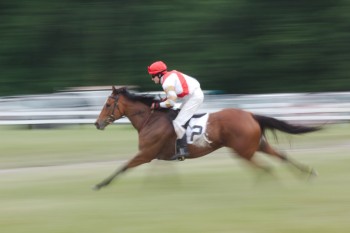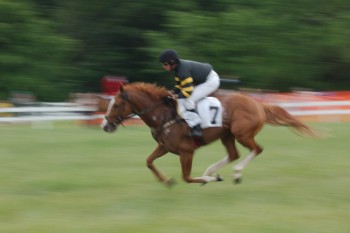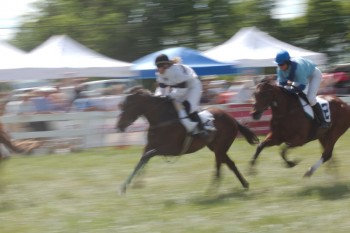Were were invited by our good friends, the Glenns, to come to the Potomac Hunt Races today. The weather was wonderful and the horses were fast. Actually, I have no idea how they compare to any other horses. We aren’t really in the horsey set and I don’t think I’m often described as being racy. Anyway, we enjoyed sitting in the shade of the canopy and eating a nice picnic lunch with friends. It’s always nice to see them and we don’t as often as we’d like. Little Elsie and Benton are certainly growing and are as cute as ever. We also met the Elkans, a name we’ve heard but never had faces to associate.
I was able to get some nice action shots showing the horses with all four feet off the ground. Of course I was trying to blur them, so I used a much slower shutter speed than I could have done. Photographic technology has come a little way in the last 140 years, I’d say.
From Wikipedia: In 1872, the former governor of California Leland Stanford, a businessman and race-horse owner, hired Eadweard Muybridge for some photographic studies. He had taken a position on a popularly-debated question of the day — whether all four feet of a horse were off the ground at the same time while trotting. The same question had arisen about the actions of horses during a gallop. The human eye could not break down the action at the quick gaits of the trot and gallop. Up until this time, most artists painted horses at a trot with one foot always on the ground; and at a full gallop with the front legs extended forward and the hind legs extended to the rear, and all feet off the ground. Stanford sided with the assertion of “unsupported transit” in the trot and gallop, and decided to have it proven scientifically. Stanford sought out Muybridge and hired him to settle the question.
In 1872, Muybridge settled Stanford’s question with a single photographic negative showing his Standardbred trotting horse Occident airborne at the trot. This negative was lost, but the image survives through woodcuts made at the time (the technology for printed reproductions of photographs was still being developed). He later did additional studies, as well as improving his camera for quicker shutter speed and faster film emulsions. By 1878, spurred on by Stanford to expand the experiments, Muybridge had successfully photographed a horse at a trot; lantern slides have survived of this later work. Scientific American was among the publications at the time that carried reports of Muybridge’s groundbreaking images.



